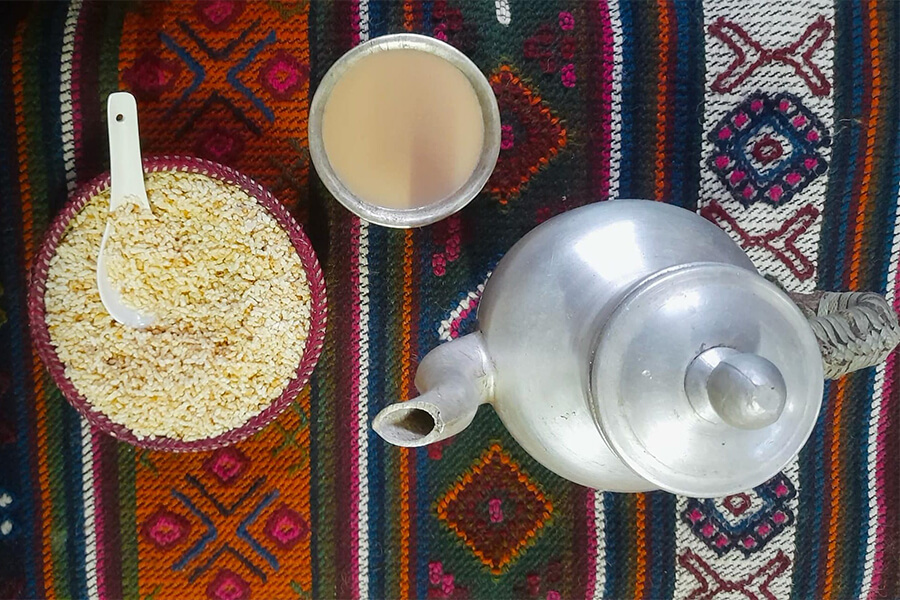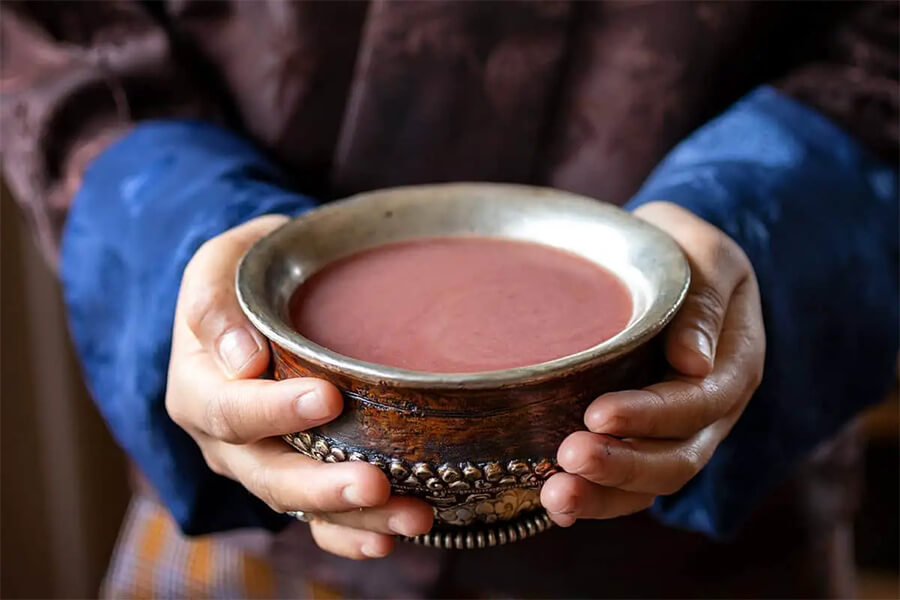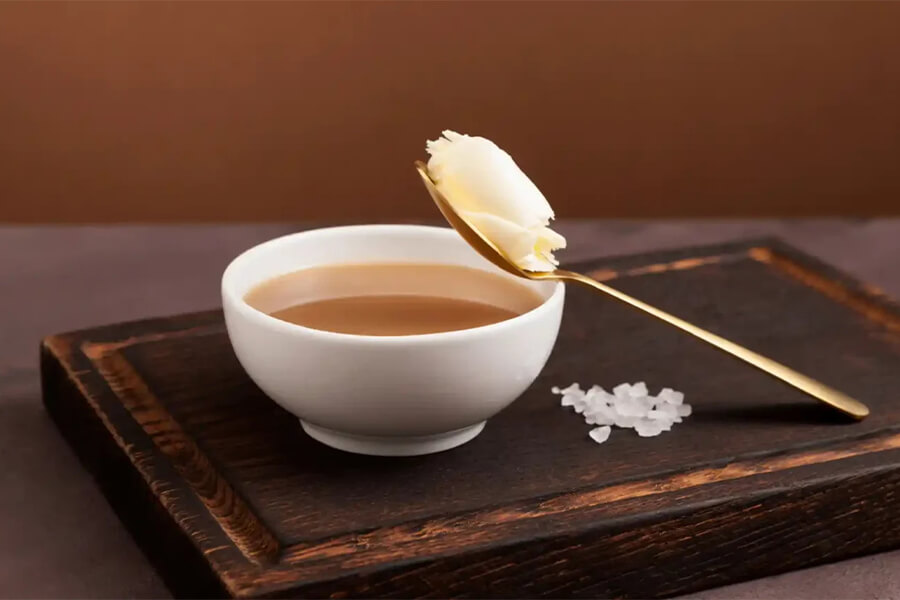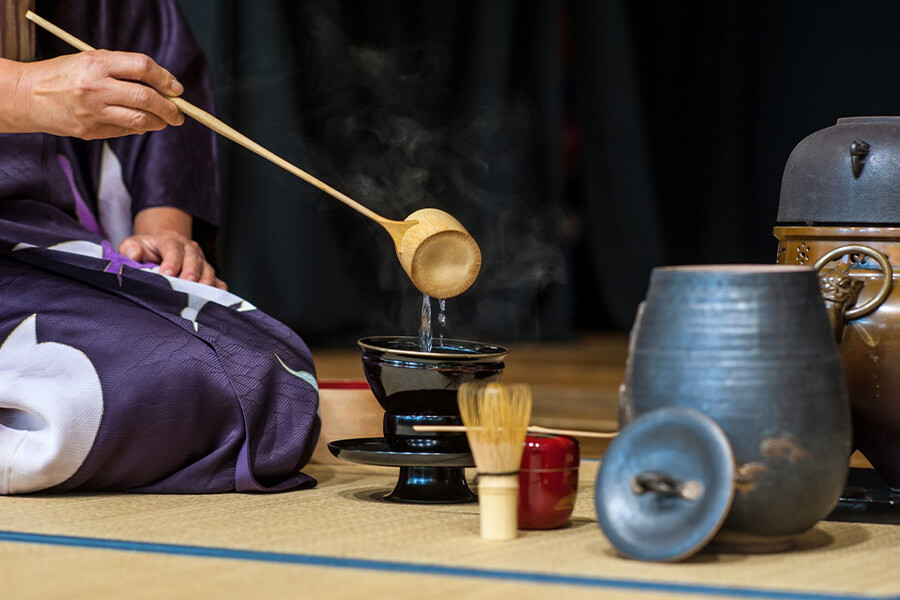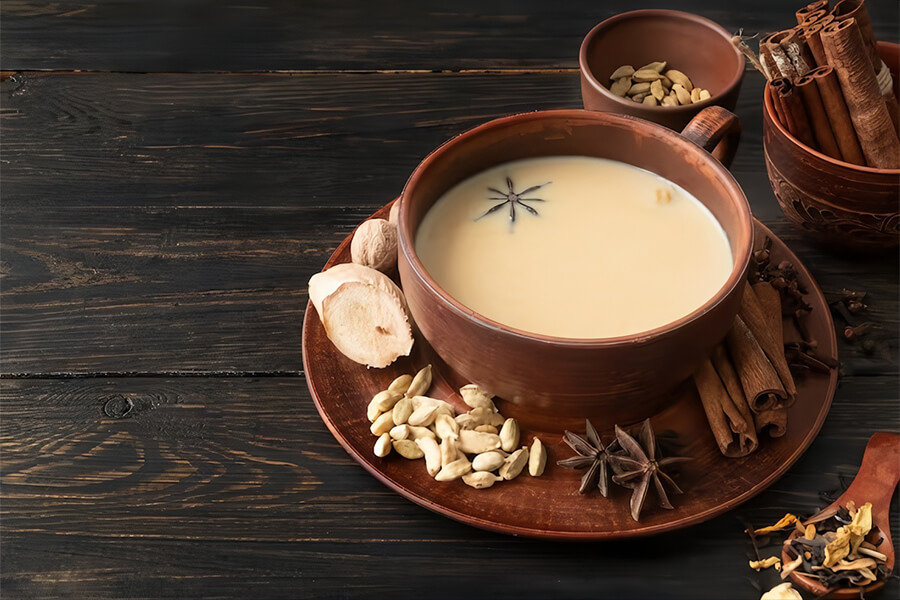Few beverages capture the essence of Bhutanese hospitality and Himalayan resilience quite like Bhutanese suja. This traditional butter tea has been a part of Bhutan’s culture for centuries - warming the body, calming the mind, and serving as a daily comfort in high-altitude life. Making suja at home is simple and deeply rewarding. Below is an easy, authentic guide to bring a taste of Bhutan into your kitchen - or relive the warmth you may have experienced during your Bhutan tour.
What is suja?
Suja, or Bhutan butter tea, is a distinctive beverage enjoyed throughout Bhutan and other parts of the Himalayas. Unlike the sweet teas familiar in the West, suja is rich, savory, and slightly salty. Its unique taste comes from blending strong brewed tea with butter and salt - traditionally yak butter in Bhutan’s mountain villages. Among the many delights of Bhutan food culture, suja stands out as one of the most comforting and iconic drinks.
This drink is deeply embedded in Bhutanese culture. It’s served during festivals, family gatherings, and as a gesture of hospitality. In many homes, a pot of suja is kept warm throughout the day to welcome visitors or warm family members returning from the cold. More than a beverage, suja represents a way of life - simple, nourishing, and mindful, perfectly reflecting the wholesome spirit of Bhutan food traditions.
Ingredients to make Bhutanese suja
Making suja doesn’t require rare ingredients. You can recreate this comforting tea at home with items found in most kitchens.
- Loose black tea (Pu-erh or strong Assam works best): 2 tablespoons
- Water: 2 cups (500 ml)
- Butter: 2 tablespoons (yak butter if available, or unsalted cow butter)
- Salt: 1/4 teaspoon (adjust to taste)
- Milk or cream (optional): 1/4 cup for a creamier texture
Optional additions
- A pinch of baking soda (helps emulsify the butter and tea)
- A drop of fresh cream for extra richness
Pro tip: For greater authenticity, source Bhutanese suja tea leaves or yak butter from Himalayan specialty stores online. Substitutes still give a warm, similar flavor.
Easy step-by-step: Make your own suja
- Brew the tea: Bring 2 cups of water to a boil in a saucepan. Add the loose black tea and simmer 5–7 minutes. The stronger the brew, the better it balances the butter.
- Strain the tea: Strain the brewed tea into another pot or directly into a blender. Discard the used leaves.
- Blend with butter and salt: Add the butter and salt to the hot tea. Blend 20–30 seconds until smooth and frothy. Traditionally a bamboo churner (dongbu) is used, but a blender works well at home.
- Serve immediately: Pour into small cups or bowls. The surface should show a light foam, similar to a latte. Enjoy hot with Bhutanese snacks like zaw (puffed rice) or khapse (deep-fried cookies).
- Adjust flavor (optional): Taste and adjust saltiness or butter level. Some prefer heavier butter; others prefer lighter.
Cultural tip: In Bhutan, it’s customary to refill a guest’s cup before it’s empty — a warm symbol of respect and hospitality.
Benefits of suja
The combination of butter, tea, and salt in suja offers practical benefits, especially in cold mountain environments:
- Boosts energy: Butter provides quick, sustaining energy useful for farmers, monks, and trekkers.
- Aids digestion: Butter can help lubricate the digestive tract and reduce acidity after meals.
- Keeps you warm and hydrated: Warm, salty liquid helps maintain hydration in cold, dry climates.
- Rich in nutrients: Yak butter contains vitamins A and E; cow butter supplies healthy fats for skin and joints.
- Promotes mindfulness: The slow ritual of brewing and sipping reflects Bhutan’s mindful traditions - a moment to pause and appreciate.
Downsides of Bhutan butter tea
While suja has many benefits, be aware of these limitations:
- High in calories: Butter tea is calorie-dense (a cup can be ~200 calories). Moderation is advised if you’re watching intake.
- An acquired taste: The salty, buttery flavor may surprise those used to sweet teas, though many travelers grow to love it.
- Not ideal for lactose-intolerant people: Use vegan butter or coconut oil for a dairy-free alternative (note: flavor changes).
Conclusion
Bhutanese suja is more than a drink - it’s a cultural emblem of warmth, nourishment, and community. Whether you’re reliving memories from a Bhutan tour or exploring new flavors at home, making suja is a simple ritual that brings a taste of the Himalayas to your kitchen.

